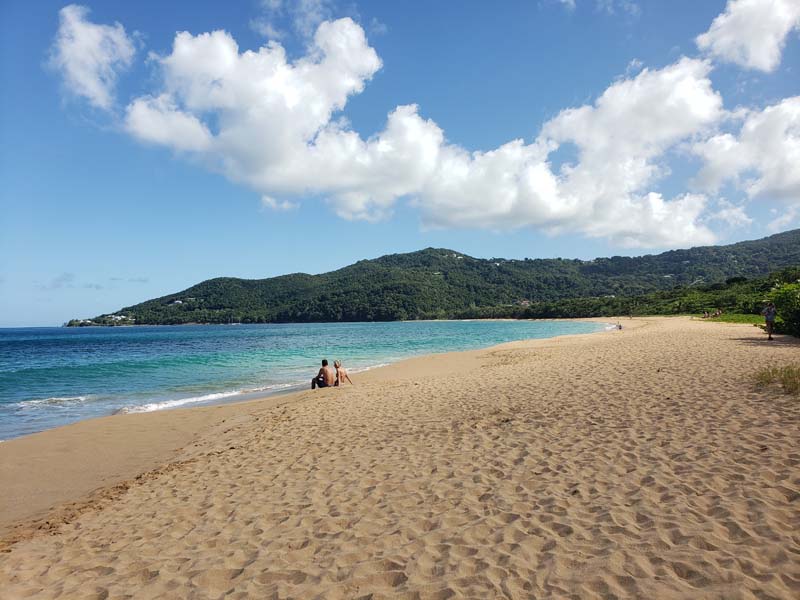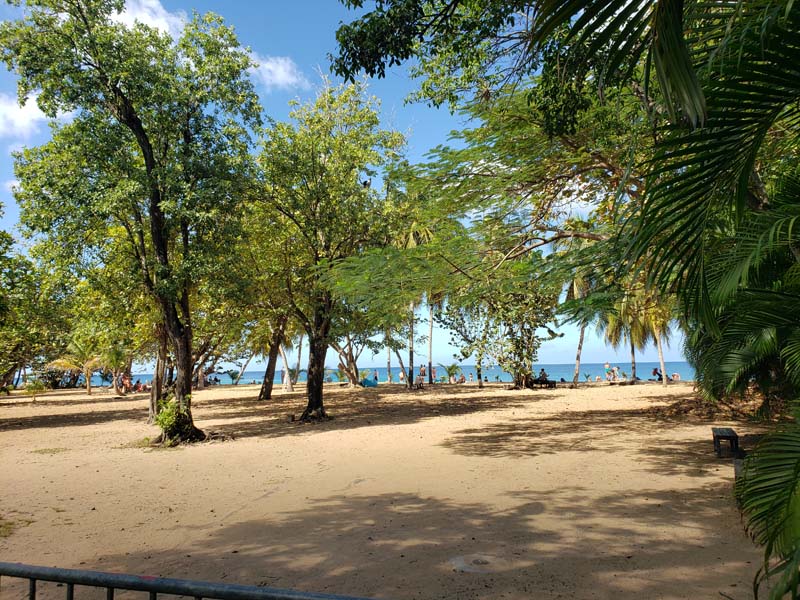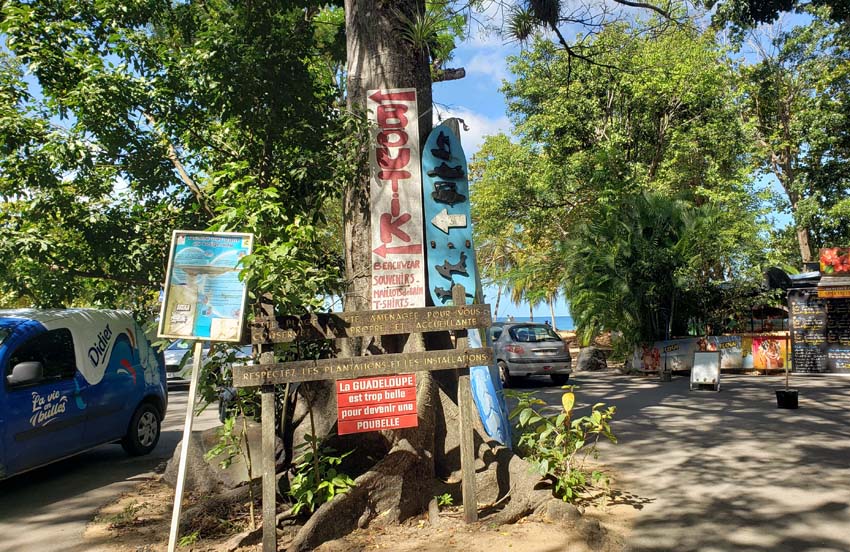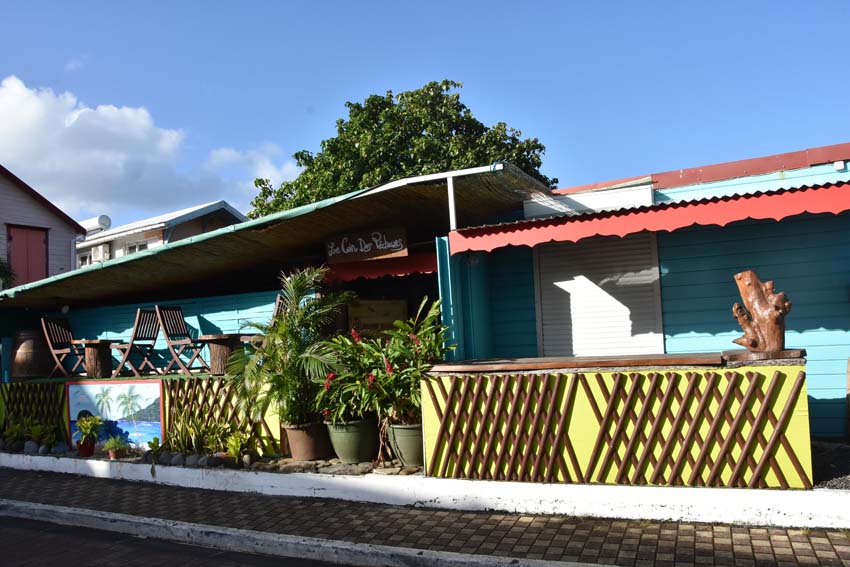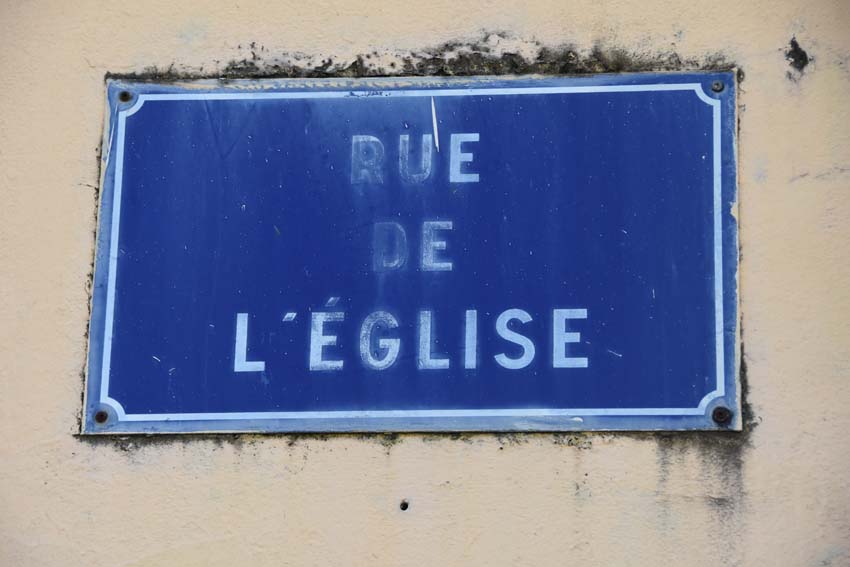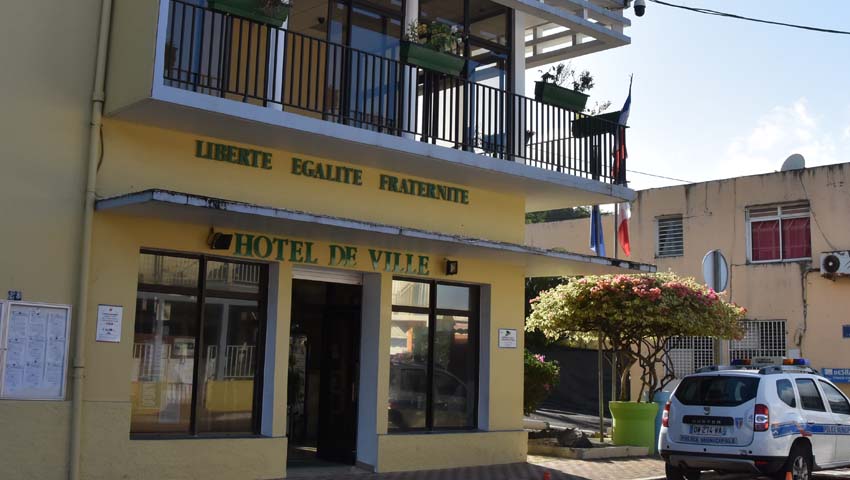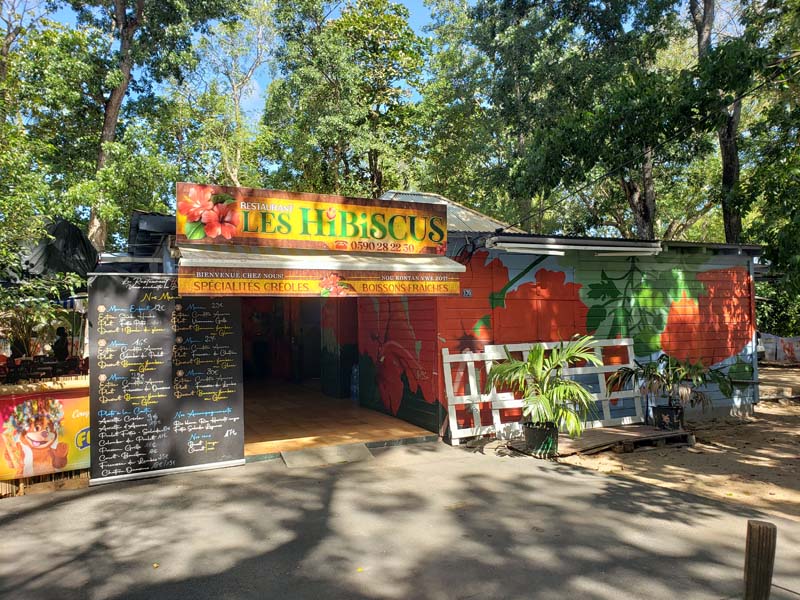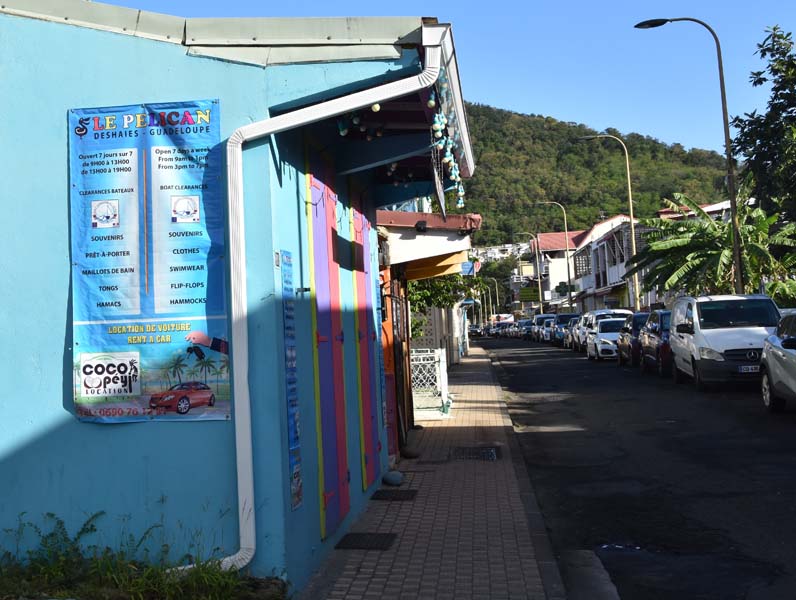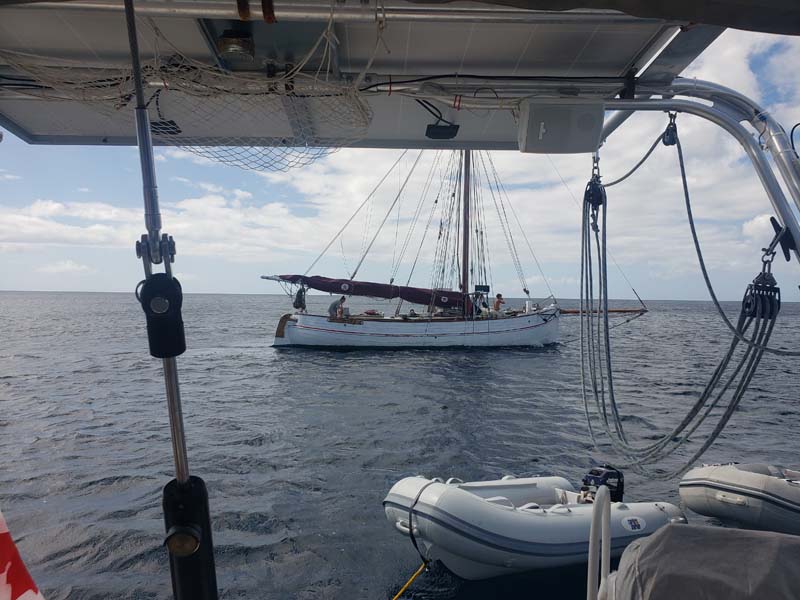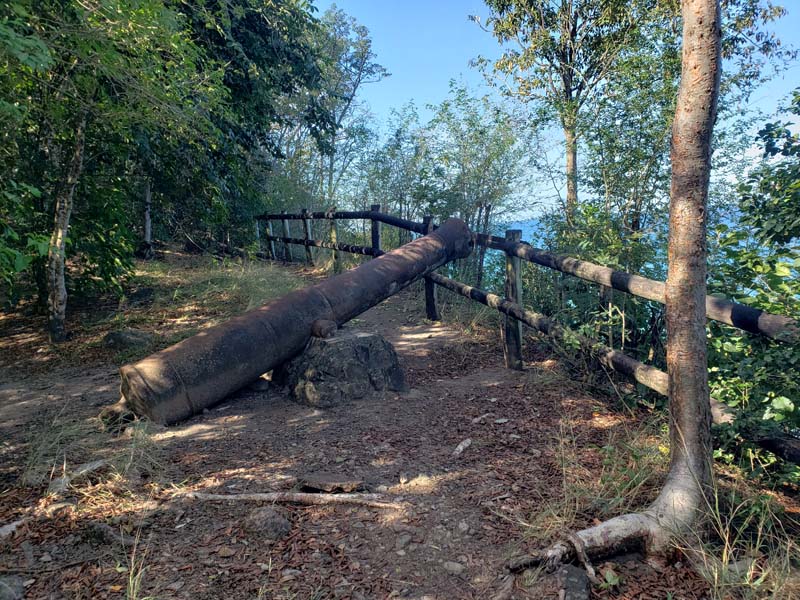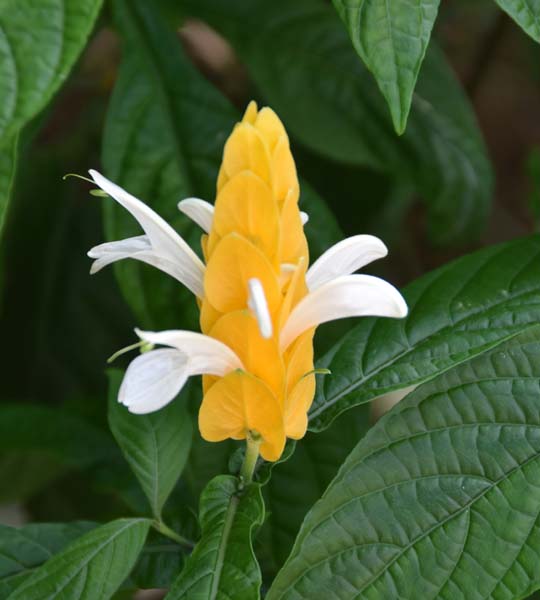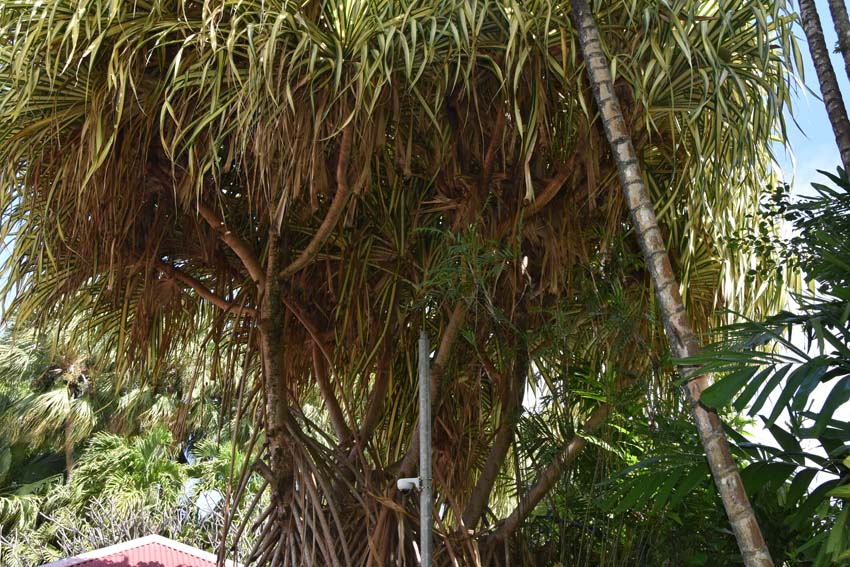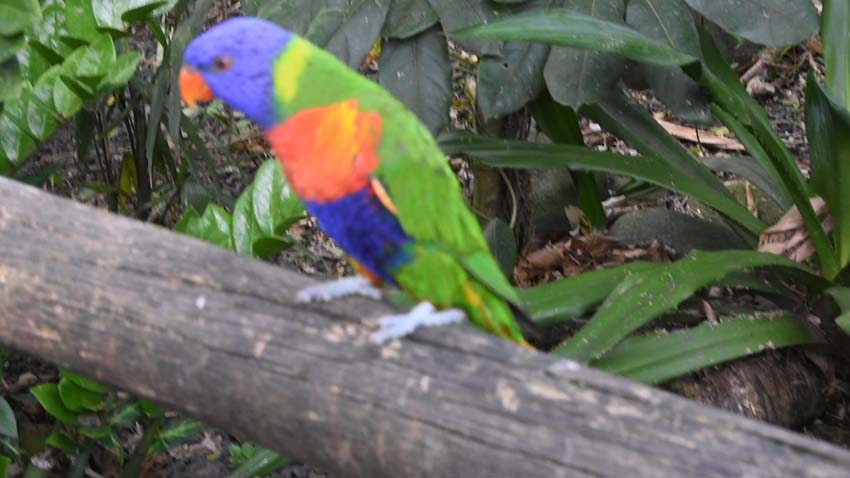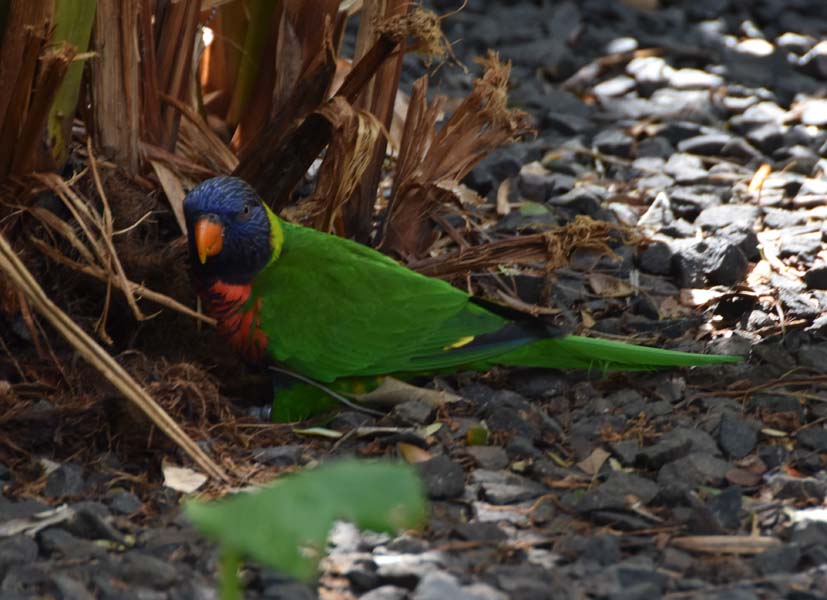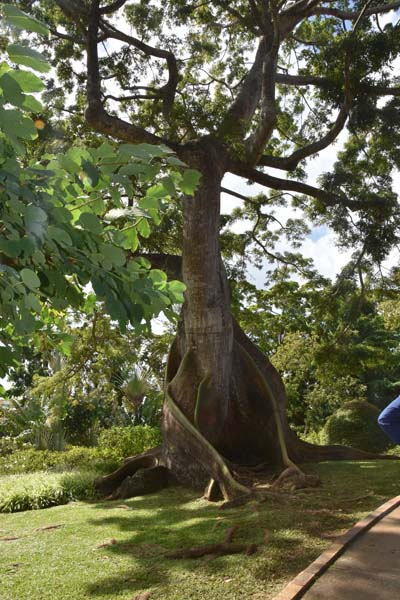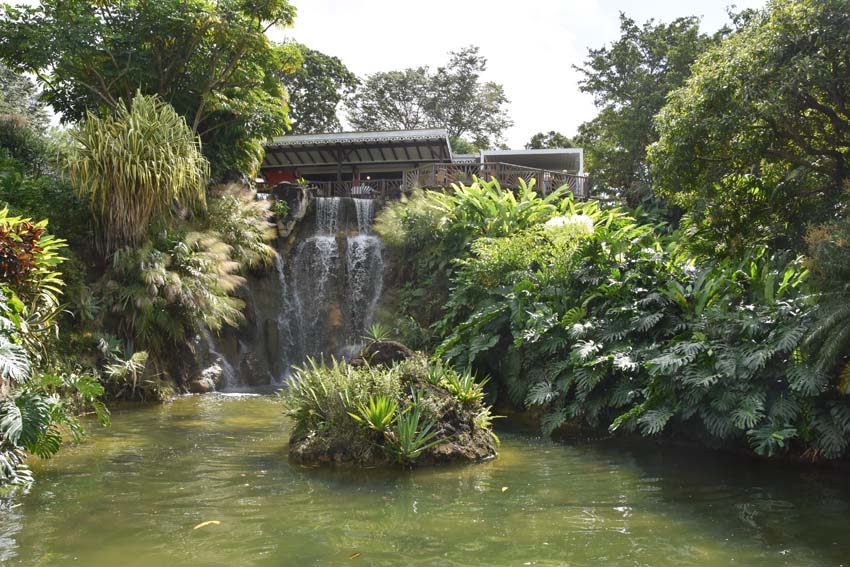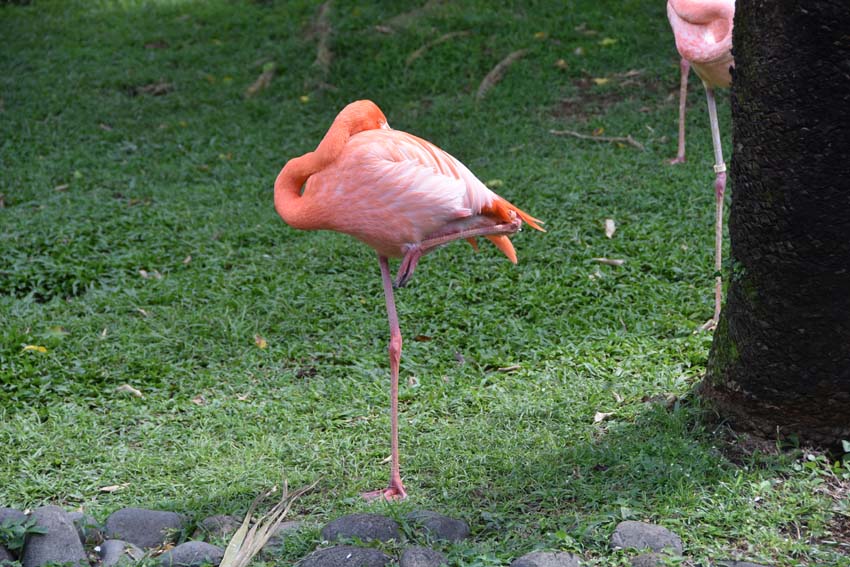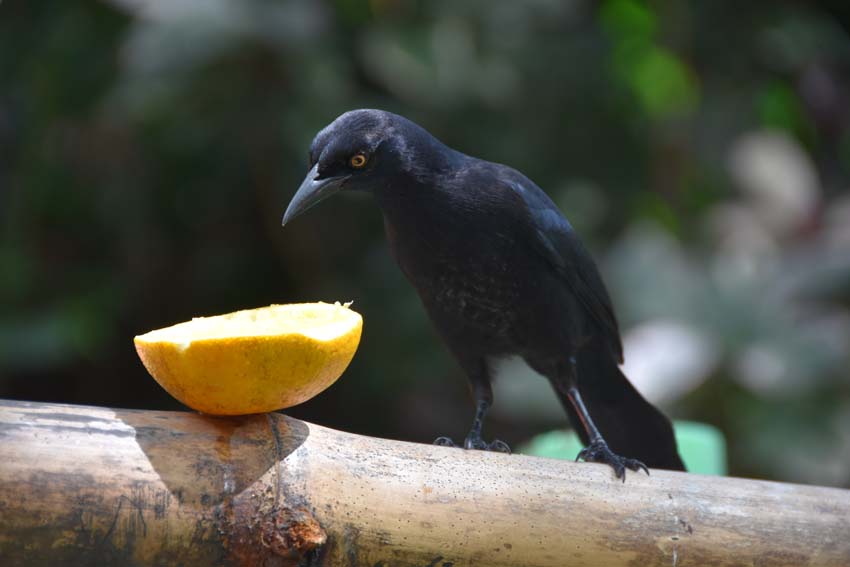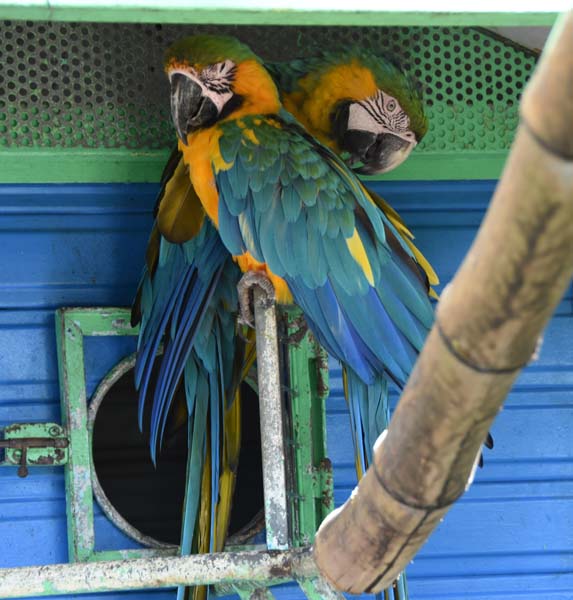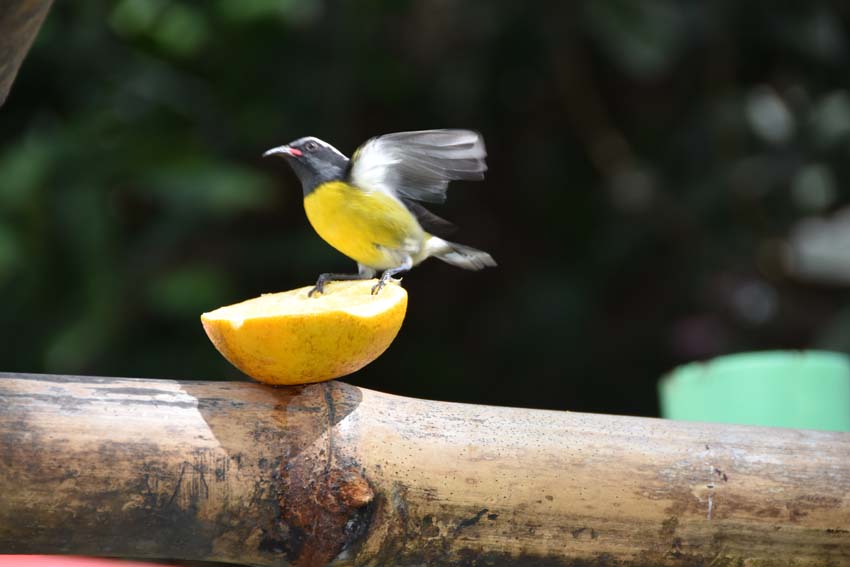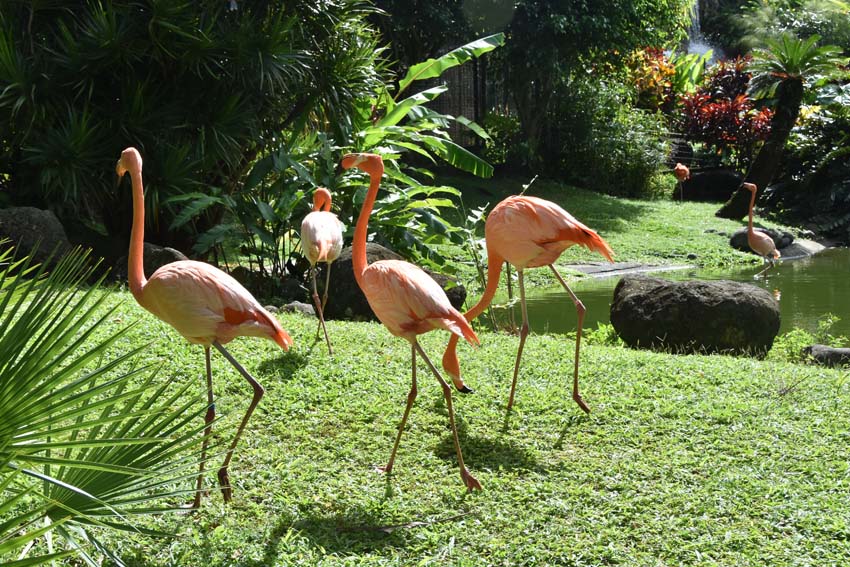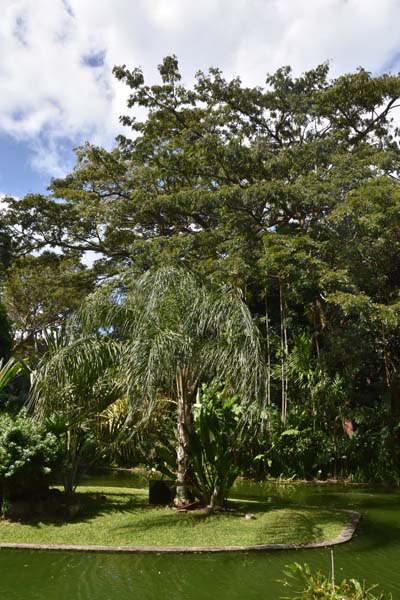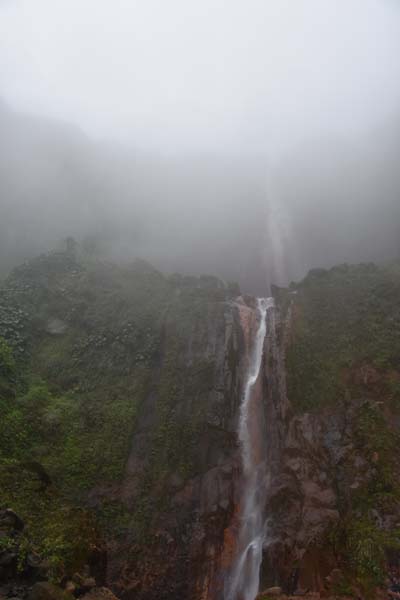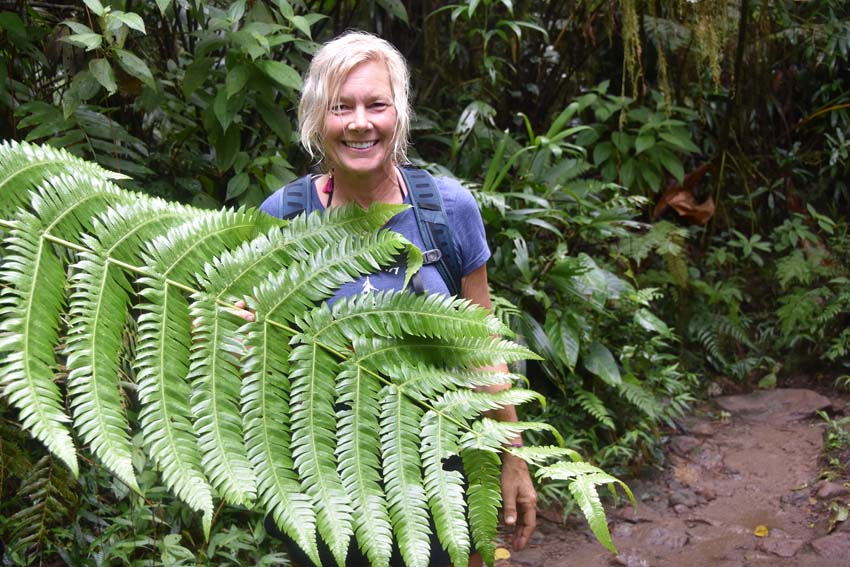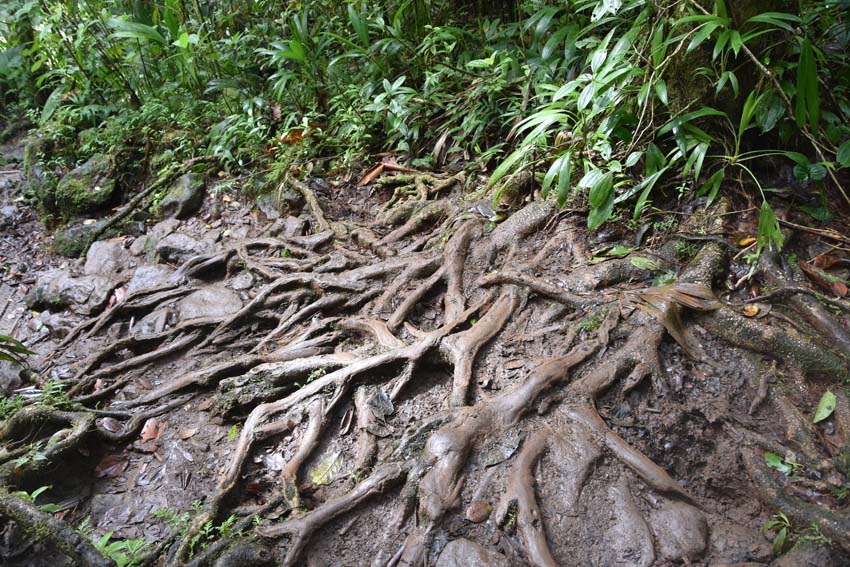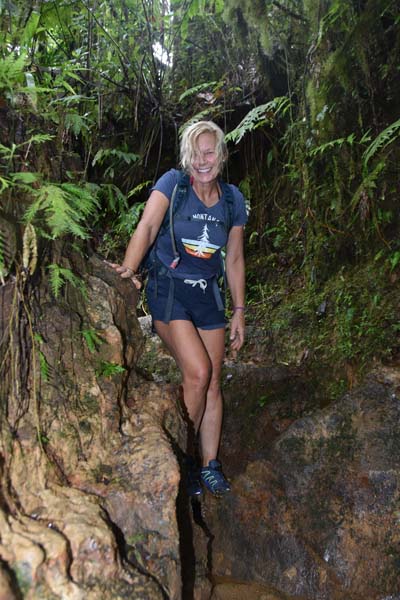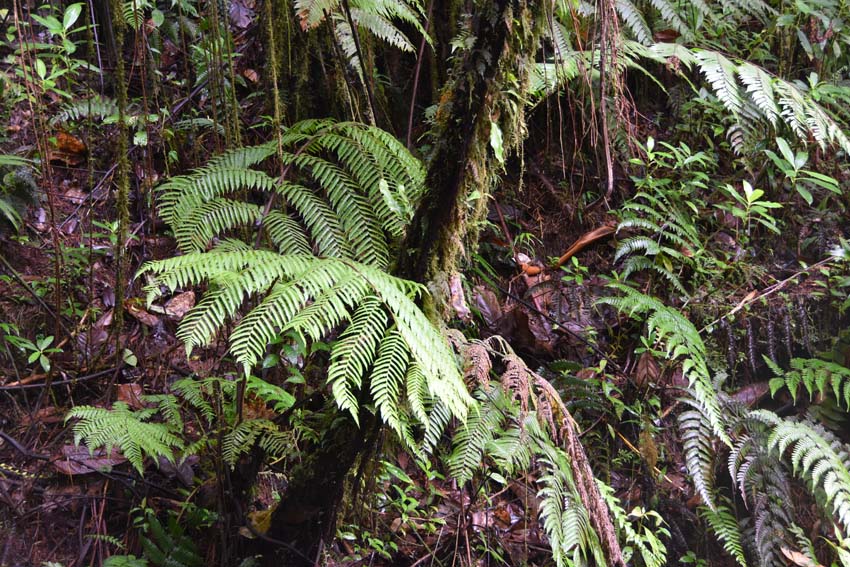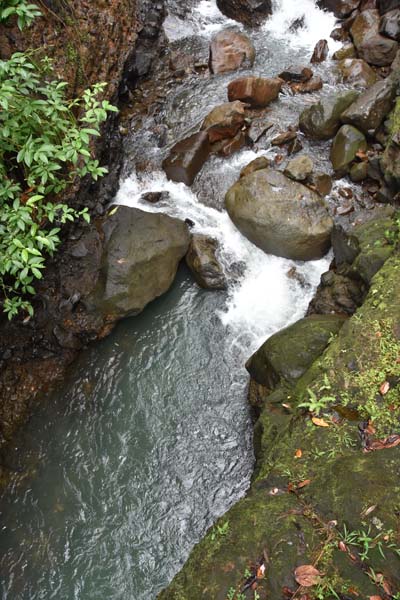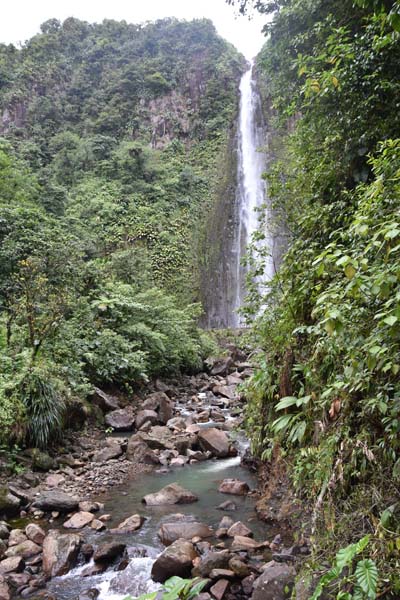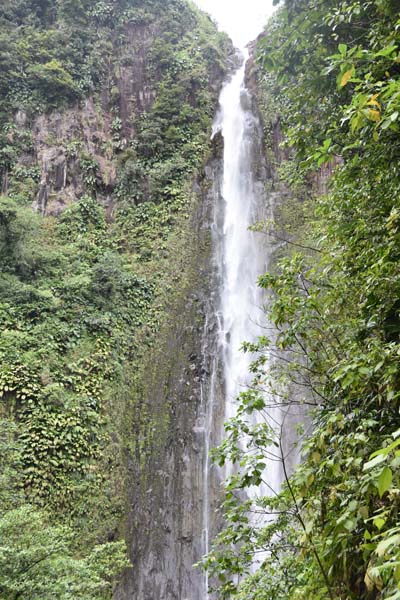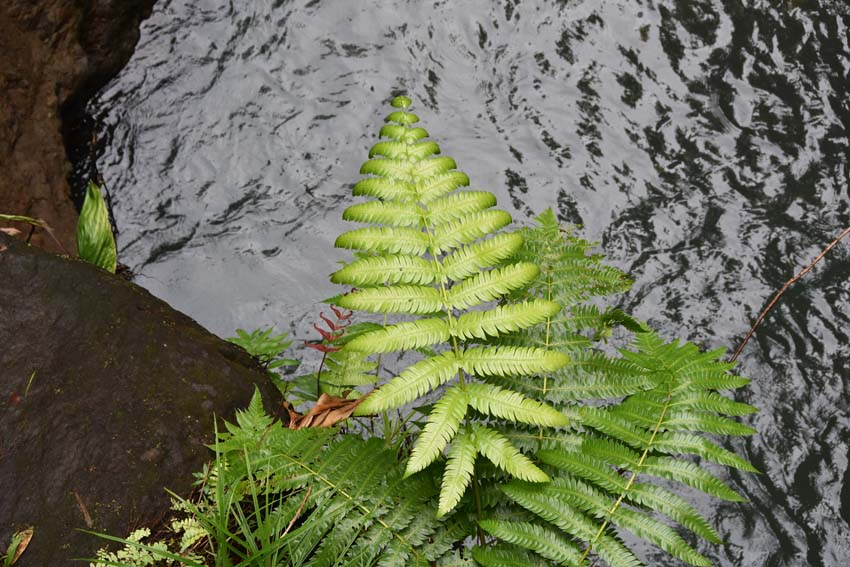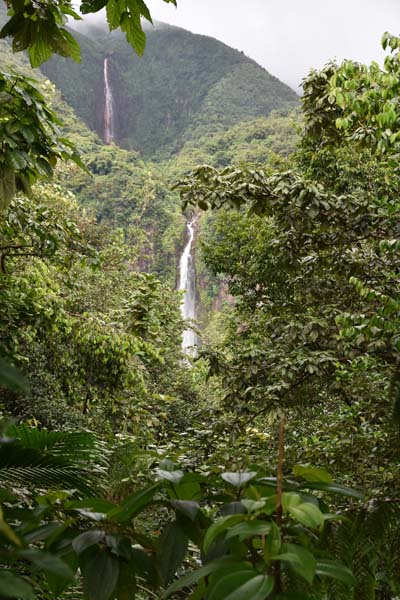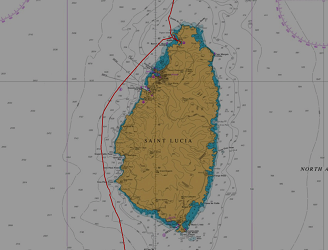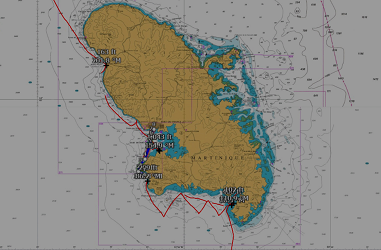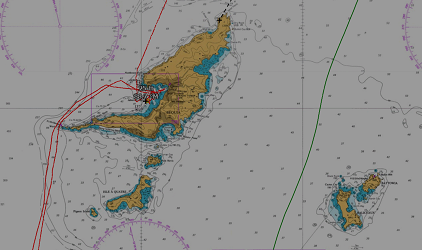GUADELOUPE
lApproximately 50 miles separate Antigua's south coast from the first anchorage in Guadeloupe, Des Haies. We left on a typical day from Jolly Harbor in the usual lively trades in December / January. Once past the lee of the islands, the winds pick up in the channel, and die in the lee of the next island.
Des Haies
Des Haies anchorage is welcoming but tends to be popular and one may end up at the end of the anchorage, not necessarily a bad thing given the anchoring skills of many cruisers, in particular charterers. Des Haies has many restaurants and shops, several of which are authentic local and high quality restaurants, a boulangerie which offers a welcome break from the british inspired breads in Antigua, and clothing and other stores. Clearing customs in Des Haies is a breeze. We showed up at the Pelican store, as described in the cruising guides, and we had a short wait for access to the computer. The biggest challenge is the azerty keyboard which has a different layout than the familiar Qwerty US layout.
Having learned to type in France as a child, and used a US keyboard for all my college and career years, I had to slow down my touch typing down to pecking the keys. The shop owner and his wife are terrific, they run a nice shop and also rent cars in addition to the immigration clearance work. Overall, we found the french islands are the easiest to clear in and out of, and I heard from one professional captain in Cariacou that the British Virgin Islands have become the absolute worst in the Caribbean, though I have no experience there. The bus route goes through town, and you can, for a fare of 1.5 to 3.0 euros, get to the botanical gardens, to the town of St Rose, or the northern beaches, quite easily. You can also hike from Deshaies to Grande Anse beach, a path that is next and left of the cemetary to cross the mountain, making a fun hike.
Anchoring
We had no issues at anchor, except for a bit of swell which was acceptable. Some fellow sailors in the Salty Dawg group were blessed with heavier swells, making for a miserable experience. Very much like snow conditions while skiing, or sun conditions at the beach, the swell can make or break the enjoyment of a leeward caribbean harbor. One thing we will improve on in the 2024 season is the use of a stern anchor to swing the boat away from the swell. We only had one bad experience with swell, however, so never completed this plan. Indeed, in St Pierre Martinique, the swell was so bad that the bilge turn revealed itself on my neighbor's Bill's Vagabond 47, Kaluna Moo's, in a swell that he described as throwing all plates and settings off the settee table. Anchoring in Des Haies, however, is straightforward and the swell was kind to us while there.
Botanical Gardens
The botanical gardens were well worth the trip. You can take the local public bus at the south side of town before the marina, past the restaurants and shops, a quick destination on a short trip up hill from town. There you will see flamingoes, parrots, hummingbirds, baobab, kapok trees, mango trees, ginger lilies, and other native and non-native fauna.
The garden is well labeled for the uninitiated like us. The stars of the show, however, were the Aras, and the rainbow Loriquets or Lorikeets, an australian native bird related to Cockateels. In the garden, you enter their world through an interlock, immersing in their raucus with awe. It is a unique experience. The Botanical Garden was once owned by Coluche, a renowned and loved french comedian who died in a motorcycle accident at 42 years of age, in a location oddly near our annual family summer rental home in Valbonne, France.
Sainte Rose
Protected by the North reefs of Basse Terre, Sainte Rose offers turquoise seas contrasted by a busy town. We found shops there, and purchased SIM cards. One thing to note, in Guadeloupe Digicel offers a plan that covers both the French Islands and all the other islands, It is the most convenient cell phone plan in the Caribbean for cruisers. Sainte Rose has a Haitian restaurant which we found tasty, but really a local dive with local people who spoke creole and barely spoke french. We enjoyed their warmth and the experience. Not much else in town but a few shops, a bus terminal, a bakery, some restaurants, and beaches.
Pigeon Island
South of Des Haies on the west coast of the Island lies Malendure, a beach, off of which Pigeon Island is located. This Island preserve is a national underwater park and protected reef area. We dinghied there and tied to the dinghy floats. There are commercial moorings dedicated to the tour boats, and public dinghy ties as well. It is normal to tie up to the same float as another dinghy, sometimes 4 dinghies sharing a float because of limited facilities. We anchored Frog's Leap next to the fishing village and the commercial shops of Pigeon. These shops are well stocked, a butcher had great steaks and kebabs, the boulangerie was authentically french, there is a Carrefour for provisions. There is also a dive operation there, a restaurant, a laundromat, and an ATM if needed.  The combination of facilities and the national park makes it a natural stop for many cruisers, but beware of the holding ground. Near the small river, the sea grass and the bottom which may tend to be cobbly near shore, makes for a challenging holding ground. We found better anchoring south of the inlet, and in the end, we dragged our Bruce Anchor. We had taken four tries to get a hold on the bottom the night before, and found ourselves drifting to sea after breakfast. This was the straw that broks the Camel's back for Bruce. Bruce got fired and I switched, while Karen was holding the boat in position with the engine, from Bruce to a Mantus 75 lbs anchor, which I had brought as a spare. Switching anchor at sea while underway, even in a very calm swell, is a challenge. We did fine with the help of Yves Berube, a dear sailing friend who had stopped by in his dinghy to investigate why we were circling. With Bruce off the job and mantus on it, we grabbed the bottom on the first try. Subsequently I ordered a SPADE anchor from Pointe A Pitre, in one of the three excellent chandleries available. We spent some time deciding how to dispose of Bruce, who needed to pursue its career but alas not on a sailboat, certainly no on ours. The idea came that a fisherman may be able to use the anchor for their work. When we approached one in the harbor, he first waved us off as they do not take lightly to the dinghies tying up to them. I explained in French that the anchor was his for free. He was delighted, picked up the anchore from the two of us who were carefully lifting 110 pounds towards the fisherman.SUddenly that weight was in his arms, he walked it across to the bow of his fishing skiff and jumped a 1.5 to 2 foot gap between the boat and the dock. THese guys are incredibly strong, and we felt a bit old and weak. But the fisherman gave us a huge smile and a thumbs up, I am sure Bruce is having a good second career.
The combination of facilities and the national park makes it a natural stop for many cruisers, but beware of the holding ground. Near the small river, the sea grass and the bottom which may tend to be cobbly near shore, makes for a challenging holding ground. We found better anchoring south of the inlet, and in the end, we dragged our Bruce Anchor. We had taken four tries to get a hold on the bottom the night before, and found ourselves drifting to sea after breakfast. This was the straw that broks the Camel's back for Bruce. Bruce got fired and I switched, while Karen was holding the boat in position with the engine, from Bruce to a Mantus 75 lbs anchor, which I had brought as a spare. Switching anchor at sea while underway, even in a very calm swell, is a challenge. We did fine with the help of Yves Berube, a dear sailing friend who had stopped by in his dinghy to investigate why we were circling. With Bruce off the job and mantus on it, we grabbed the bottom on the first try. Subsequently I ordered a SPADE anchor from Pointe A Pitre, in one of the three excellent chandleries available. We spent some time deciding how to dispose of Bruce, who needed to pursue its career but alas not on a sailboat, certainly no on ours. The idea came that a fisherman may be able to use the anchor for their work. When we approached one in the harbor, he first waved us off as they do not take lightly to the dinghies tying up to them. I explained in French that the anchor was his for free. He was delighted, picked up the anchore from the two of us who were carefully lifting 110 pounds towards the fisherman.SUddenly that weight was in his arms, he walked it across to the bow of his fishing skiff and jumped a 1.5 to 2 foot gap between the boat and the dock. THese guys are incredibly strong, and we felt a bit old and weak. But the fisherman gave us a huge smile and a thumbs up, I am sure Bruce is having a good second career.
Cousteau
I grew up watching "Le Monde du Silence" on french television. Jacques Cousteau was part of the life of every person interested in the ocean and marine biology at the time. He showed innovation in technology with not only his adaptation of navy diving to leisure, but also in creating new technologies for underwater diving, such as the small flying saucer subs and the scooters, and simple things like shells to cover tanks in order to reduce motion drag. His documentaties, which years later are accused of being staged and not always in the best interest of the animals filmed, were nevertheless priceless in educating the public in the ecosystems which at that time were essentially used as a fishing resource or a chemical dumping ground for a number of nations. His work made a difference, and it is no surprise that they would dedicate a park to his name, and place a statue of him underwater. I have never seen so many parrotfish as I did in that area, and while we were surrounded by tour boat tourists, nevertheless the fish made up for the over population of people. We came on two occations to anchor in these waters, spending a total of three or four days in the park. I suggest a thin shortie snorkeling or dive suit, as you want to expand your time from a 40 minute to as much as an hour and a half and this may be best with the right insulation, not just for this location but for most reefs.
Pointe-A-Pitre
If you need provisions, boat repairs, or marine supply items for your boat, Pointe A Pitre is a very good spot, though Le Marin in Martinique is better. Big Ship, U Ship, Karen Accastillage, and Fred Marine, etc, providing electronics, anchor supplies, line, and so on. The marina is a safe place to leave the boat, and a good place to stay if you don't mind the occasional sewer smell that seems to have been there for 25 years on and off.
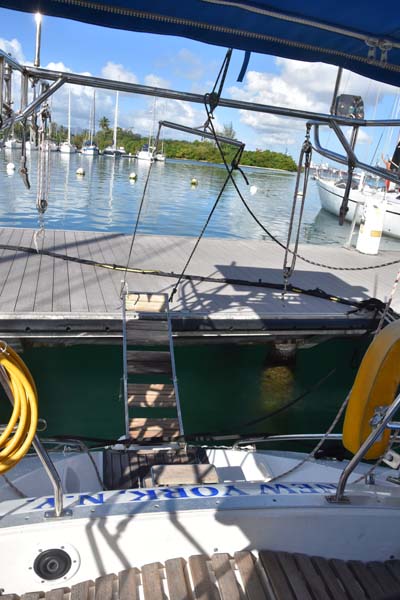
In 2023 our fee was $40 a night, peace of mind allowing us to explore. The dock master at the marina is experienced and helpful, the office staff is typical of government workers in France and their attitude is the usual indifference. The mediterranean moor docking is used here, and good bow handling skills are useful, a bow truster helps too. The dockmaster comes to the rescue acting as a bow thruster with a rather large outboard on a carolina skiff or equivalent boat. Overall a good stop for a few days and if the boat needs to be left for a period of time, it is a safe harbor.
Chutes Carbet
Les Chutes de la riviere du Grand Carbet: The falls of the great Carbet River. A Carbet is a large open structure with a covered roof, typically found in native villages of the Caribbean, a form of large hut for communal gatherings. The name of the river is believed to have the origin in these structures. The source of the river is in the Soufriere east side. Each waterfall loses some of its mineral to the rocks. The first two falls are visible from some ocean spots and it is believed that Christopher Columbus had observed these. The first fall is 115 meters, the second is 110 meters. The third is only 20 meters but exhibits a very high water volume into a circular pool. The third waterfall is no longer accessible since 2008, when the trail washed out in a landslide and the government shut down access. We rented a car to drive to the waterfalls, two couples splitting the rental car from the airport.
I had learned to use the bus system in Pointe-A-Pitre, I will mention those later in this page, so getting a car for the hike was a bit of logistics but in the end fairly simple. We drove to the welcome center which offers parking, and after a modest fee per person we started hiking. The lower trails are very well maintained, and the higher you go, the wilder it is. You may have sections with roots, others with sandy slippery rocks, and sections of steep climb with stainless steel ropes to hang onto. The hike was long and demanding, not so much because of the inherent difficulty of the terrain (there was only one spot with a 5 foot "cliff") but because it is the rain forest, and in there everything is constantly misty and wet. We would not overheat, but we had to guard against slipping. One of our friends managed to lacerate his palm on a rock doing just that. But we have to state that this was one of the best hikes we experienced in many years. The majesty of the falls, and the lengthy climb to get there, as well as the slipery return on the way down, all combine to a memorable experience. Many hikers were encountered, this is a popular hike, but we will do it again.
Buses
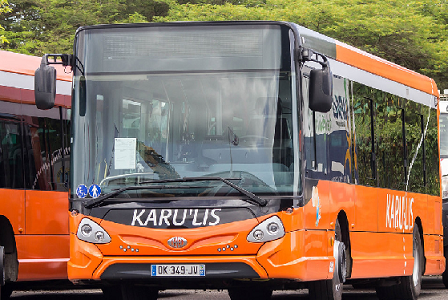
If you need transportation in the Pointe a Pitre city area, karulys is a good metro transport solution but taxis are faster. The buses offer affordability, and there is an app that you can download to your cell phone (Karulys). This app tells you how to get from point A to B or from your current location, as well as the bus schedule and where to change buses to get to your destination.
